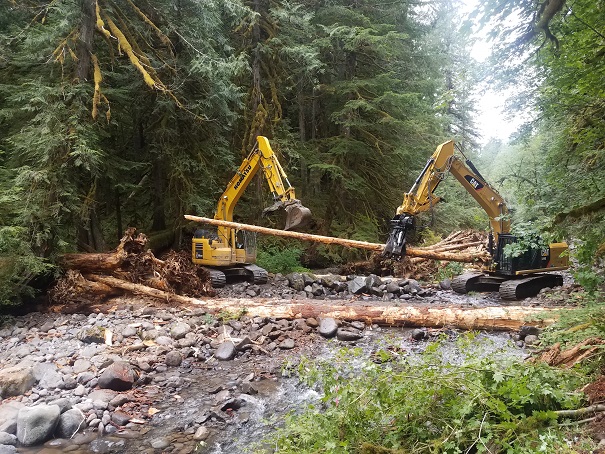Nature & Science
National forests offer tremendous opportunities to learn about science and nature through education, exploration, observation, and recreation. The most exciting way to learn about the forests is to be out there- seeing, hearing, feeling, smelling the world around you.
For the latest scientific updates from the region check the Pacific Northwest Research Station website.
-
Hike with a Ranger

Join Forest Service staff on a hike this summer! Each hike will be guided by recreation staff and will feature a scientist or specialist presenting a natural or cultural resource theme.
-
Forest Atlas of the United States

The United States of America has a remarkable forest resource—more than 765 million acres of planted and natural forest land and an additional 58 million acres of woodlands. These lands provide clean water, clean air, wildlife and fish habitat, recreational opportunities, and for nearly four centuries have been the foundation for economic development. This atlas introduces the reader to a trove of information, also available online at the forest atlas website.
-
Sandy River Basin Restoration

Learn more about some of the ongoing work to improve aquatic habitat along the Sandy River and its tributaries on the forest!
-
Wildlife Closures

Big game, like deer and elk, depend on safe and secure habitat to survive. Learn more about wildlife road closures across the Forest.
-
Reintroduction of Bull Trout
Much of the Clackamas River is on the Mt. Hood National Forest and provides habitat for a huge variety of plant and animal species. Watch this video on the reintroduction of bull trout, telling the story of the efforts of fish biologists to see bull trout flourish in waters where they were eliminated more than 50 years ago.
Climate Adaptation
The Forest Service Climate Adaptation Plan (CAP), announced in 2022, is available here. The plan identifies climate change vulnerabilities affecting the agency’s ability to fulfill its mission organized across six broader categories:
- Shifting fire regimes
- Extreme events and disturbances
- Chronic stressors to watersheds and ecosystems
- Disruptions in the delivery of ecosystem products and services
- Disproportionate impacts on disadvantaged communities and tribal nations
- Threats to the Forest Service’s mission, infrastructure, and operations
In the Pacific Northwest Region, we are already facing some effects from climate change and expect these impacts to intensify. The region is fortunate to have a series of robust climate change vulnerability assessments and strong partnerships with research, which will help national forests in Oregon & Washington apply the CAP to our specific landscapes. Learn more about our adaptation partners, science-management partnerships focused on climate change adaptation in western United States.
Wildlife Species found on the Forest
Amphibians List | Birds List | Butterflies List | Mammals Lists | Fish | Bats
These species can be found on the Mt. Hood National Forest! Some species may occur in migration as well as breeding on the National Forest. This information is provided for both the public for recreational use and for people interested in the management of species on the Forest. It is not an exhaustive list based on all records of accidental or rare species sightings but more of a general list based on occasional sightings and habitat associations.
 Bear paw print in the mud.
Bear paw print in the mud.

